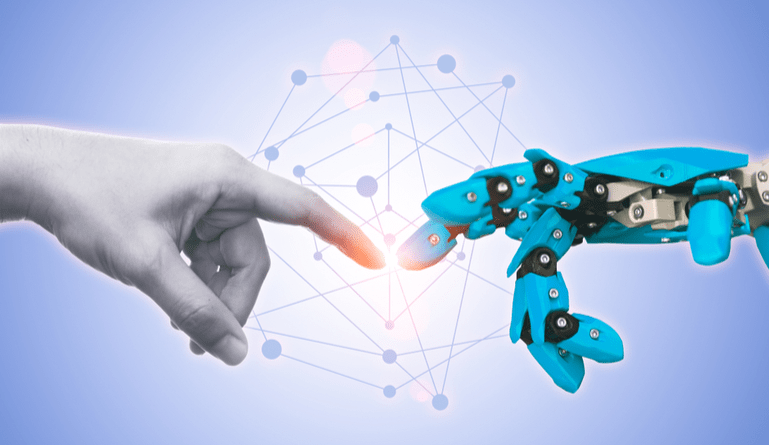Human resource departments and new employees are benefiting from the implementation of robotic process automation (RPA) in the hiring process. RPA may sound like terminology related to using robots on an assembly line. It is not. Robotic processes should not be confused with mechanical robots. Robotic processes are administrative tasks that are mundane, repetitive, and routinely performed.
Rather than have skilled humans do these processes in a labor-intensive way, RPA allows software and systems to do these processes more efficiently and effectively. RPA methodologies can be applied to new employee onboarding in order to take care of these repetitive tasks.
Just because the tasks are routine and repetitive, does not mean that they lack importance. Quite the opposite is true. They may be part of a critical path in the onboarding process for new employees that ensure regulatory compliance and the enforcement of a company’s policies. RPA helps with improving onboarding process results in terms of overall compliance in welcoming new employees.
Robotic Process Automation Improvements
Here are some ways that RPA improves new employee onboarding:
1. Automatic Onboarding Workflow
When a new employee is going to be offered a job, the offer letter is automatically generated and sent out by the RPA system. The offer letter has a pre-approved format. Its contents are specifically approved by a designated company official who has the hiring authority for that job.
Once a new employee account is established, this triggers a predetermined workflow.
The company can establish rules that the RPA system uses to make decisions according to the new employee’s profile. This onboarding workflow allows access to company data systems that are needed for the new employees to do their work. This access is granted according to a specific position’s job description.
For example, a payables accountant may be granted access to the company’s general accounting ledger, whereas a warehouse worker has their access restricted to inventory and shipping data only. This process functions better when it is automated and when it does not require significant manual human input.
2. Paperwork Reduction
RPA systems help reduce hiring paperwork. Human resource departments, with outdated legacy systems, still use paperwork for up to half of the hiring processes. This is extremely wasteful. Digital transmission of documents, with the ability to electronically sign them, helps create the paperless office. An RPA system is an integral part of this effort to get rid of unnecessary, manually-processed paperwork.
3. Compliance
Regulatory compliance and company policy are both important and may change frequently. The RPA system links to information about regulations that affect a company. When the regulations change, the processes and documents involved can be changed accordingly. If they can be linked to the RPA system for automatic updates that is the preferred design.
4. IT System Security
As part of the automated workflow for a new employee, the employee is automatically assigned an email address and given access to the company’s network systems, applications, and files, according to their level of authorization. The new employee is automatically added to email-distribution lists that are appropriate. They are given company information based on their job title, responsibilities, and their preferences. Any needed IT equipment is ordered for the new employee and set up with the all needed software installations that are updated to current versions.
5. Well-Equipped Employees from Day One
The goal of a highly-functional RPA system is to have every new employee be well-equipped from the first day of their employment. It is interesting to note that there is a counter-intuitive response to automated processes for new employee onboarding. One might assume that having these things dealt with in a robotic fashion would feel impersonal and therefore somehow inferior. Quite the opposite is what happens.
The average person does not feel uncomfortable if their needs are handled by the system. Instead, when they can customize their requests, within the parameters allowed by company policy, this feels like personalized care. When everything they need is ready to use and available to them on their first day; this makes a new employee feel more welcome.
New employees are empowered by this RPA system technology when compared to having to ask for help from another busy employee in order to get started in their new job.
6. Onboarding Documents Management
A new hire always involves significant documentation. It is easy for an important document to be missed or neglected when using a manual system that relies on paperwork. The RPA system removes this possibility of error because all the necessary documents have controls that make them get processed correctly (read, signed, stored for future use, copies sent to others etc.). Moreover, there is an audit trail that shows the date and time stamp of how the document was processed.
7. HR Staff Does More Important Work
When using a system of robotic process automation for employee onboarding, this frees up the time of the human resources staff to do other things. They can allocate time to do things that are more productive. They can focus on proactive hiring and recruitment, managing hiring practices to help reduce turnover and using their brainpower to do a better job. They can think of ways to improve outcomes and implement overall improvements, as opposed to being a “paper pusher” all the time.
It is surprising that many companies have not yet implemented RPA methodologies for human resource management. Many of the RPA solutions are cloud-based. They can be implemented without a huge investment in IT infrastructure or the need for expensive software development. All C-level HR leaders, executives, and technologists should act to implement these strategies immediately. The benefits are substantial for those who do.





